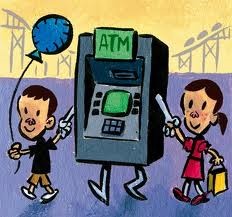
As human beings, we are hard wired for connection. Our brains are literally designed to form bonds and seek families—biological or synthetic. Behavioral psychologists have done lots of research to understand how our brains respond to philanthropy and volunteer. Three different studies* I’ve come across all concluded that there’s a correlation between a person’s charitable giving behaviors and their level of happiness. The act of making a gift or volunteering literally triggers the oxytocin-rich social attachment regions in our brains that are used in maternal and romantic love. So, making a gift, in essence, creates a bond with the organization that we are supporting. Tied to those bonds and communities we strive to create and be part of is the story we want to tell about ourselves.
As fundraisers especially as we enter the busiest crunch with end of year fundraising, it’s important to stop for a minute and consider the person on the other side of the table. What’s driving that donor to give or not? I’ve been thinking a lot about this lately as I consider the organizations that I support and with whom I have become connected and, in some cases, reconnected. Here’s what I’ve concluded:
1. How Are We Telling Our Story? Lin-Manuel Miranda’s brilliant musical, Hamilton, concludes with a song entitled “Who Lives, Who Dies, Who Tells Your Story” that sums up the legacy of Alexander and Eliza Hamilton:
And when my time is up/Have I done enough?
Donors see their gifts as part of a solution or difference they want to see in their community or in the world. Our philanthropic behavior pieces together the sum parts of who we are and what’s important to us. Personally speaking, the organizations I support and volunteer with are institutions and missions that have, in some way, shaped who I am today. Giving back recognizes that deep connection in my life. Fundraisers must always remember that success isn’t based on how articulately you make an ask or how passionately you convey your cause. It starts with understanding how your organization’s mission aligns (or not) with the story the donor wants to write about his or her life. If the donor’s core values and your mission match, there will be a spark.
2. Relationships Matter. Each year, I carefully look not just at how much I’m giving but at how I feel about the relationships with the charities I’m supporting. Do I regularly hear from the organization? Has the organization shown appreciation and gratitude? Or is this purely a transactional ask/give relationship? If I’ve been involved as a volunteer, do I feel seen and valued for the contribution of my time and expertise? The nonprofits that take the time to make small gestures of thanks, keep me regularly informed, and genuinely show that I matter as a donor and/or volunteer show me that this is more than just getting a check. As the donor, I then look at that relationship as more than just writing the check.
Fundraisers have the honor of connecting people with opportunities to realize their dreams for the change they want in the world. That may sound hokey but it’s true. In each of our own ways as fundraisers and donors, we are making a difference. Instead of driving your fundraising plans and activities only around goals to reach, consider how you are planning to reach those goals. Are you focused on building relationships or collecting checks? Believe me, your donors will notice.
For more about these studies, visit:
http://www.aei.org/wp-content/uploads/2011/10/20071227_JEF2007.pdf
http://www.hks.harvard.edu/saguaro/communitysurvey/index.html
